Discover the artistry and vision of famous photographers who have captured the world’s imagination through their lens. This article delves into the lives and work of some of the most iconic photographers in history, revealing the stories behind their most celebrated photos.
If your pictures aren’t good enough, you aren’t close enough.
Robert Capa
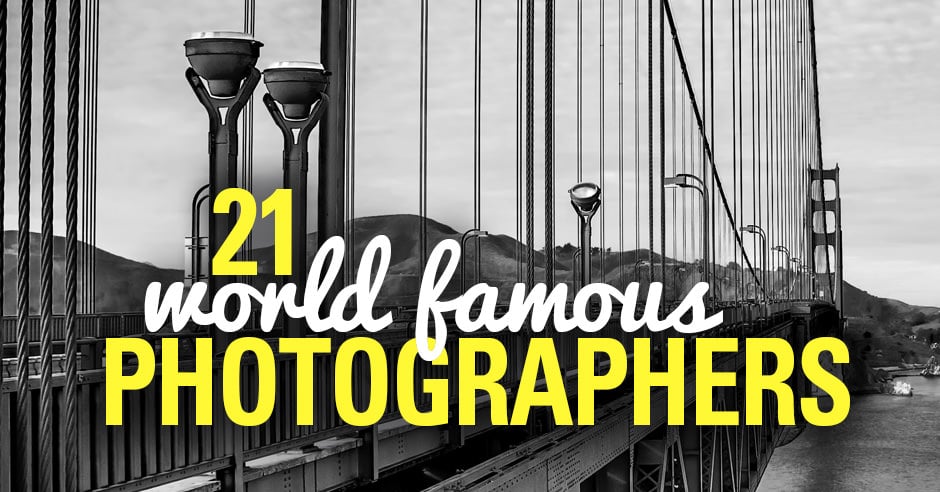
It is more important to click with people than to click the shutter
Alfred Eisenstaedt
21 Famous Photographers You Need to Know
If you’re a photography enthusiast, compiling a list of famous photographers in history you should know and admire is a challenging task in itself, let alone narrowing it down to a fixed number.
Nevertheless, as challenging as it may be, we’ve managed to compile a list of 21 photographers whose work is considered the pinnacle of photography. Based on specific criteria and objectivity, we’ve compiled a list of 21 famous photographers known for their passion, dedication, and unique style.
So, without further ado, let’s discover more about these notable photographers in history!
1. Ansel Adams (1902-1984)
Ansel Adams, one of the famous photographers of all time, earned the title “Supreme Master of Landscape Photography” for his immaculate prints, highlighting the crucial role of post-processing in photography.
Adams, an American photographer and environmentalist and one of the most significant photographers of the 20th century, showcased his profound love for nature through his work. His iconic landscape photographs of the American West, especially Yosemite National Park, are celebrated worldwide.
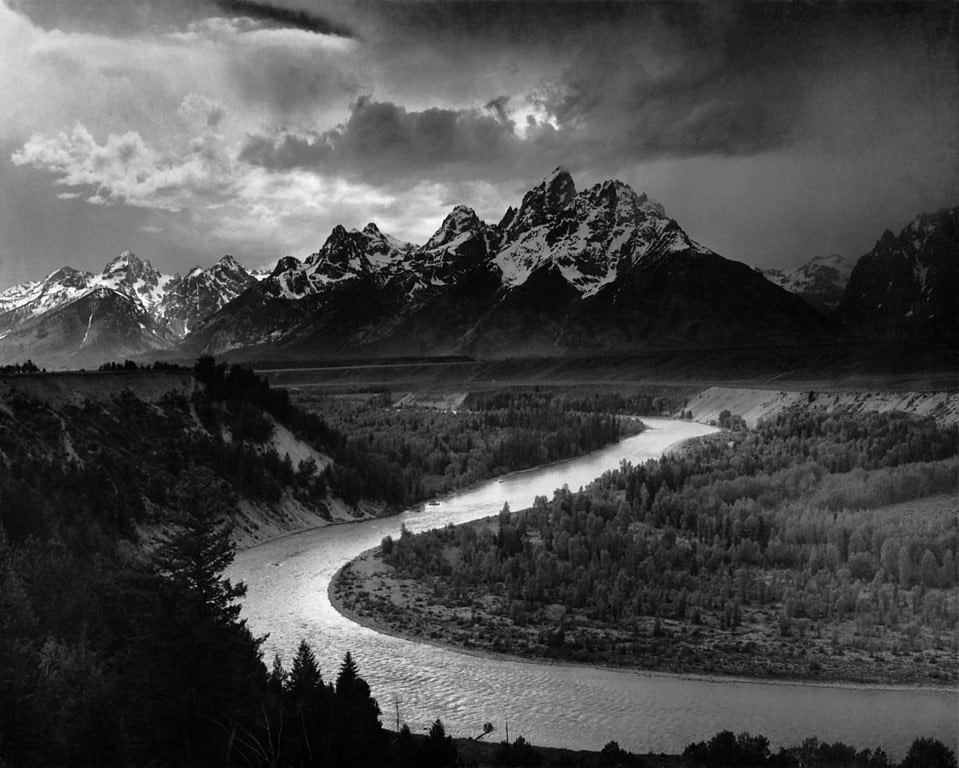
When discussing “landscape photography,” Adams is often recognized as one of the most famous names in the field. His passionate dedication to the art led him to perfect his craft, primarily using large format cameras known for their ability to produce high-resolution, sharp images.
Adams predominantly used large format cameras, known for their ability to produce exceptionally high-resolution and sharp images. These cameras, starting at 4×5 inches, enabled him to capture intricate details in his photographs.
To illustrate the immense detail that large format cameras could capture, consider that you can fit 15 35mm negatives in a 4×5 negative, the smallest of large format. In an 8×10 negative, another standard of large format, you can fit 60 35mm negatives.
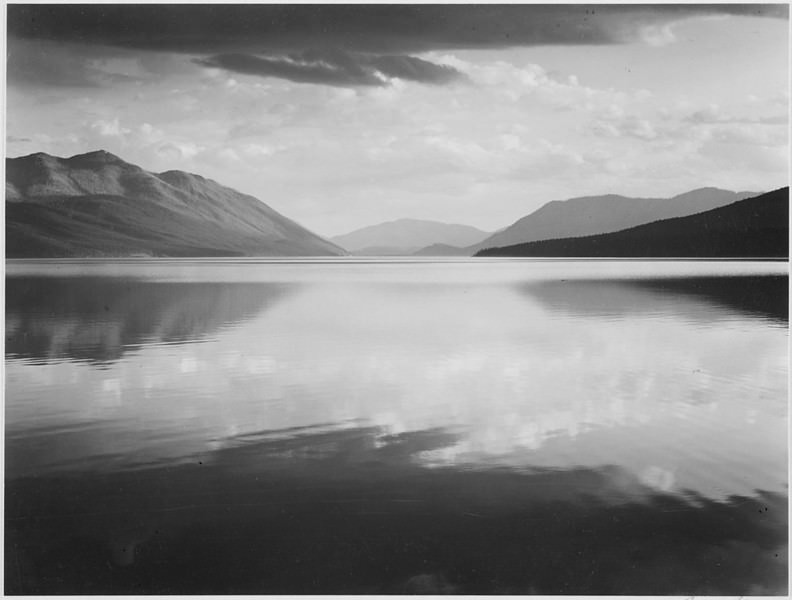
Adams was a founding member of Group f/64, a collective formed in the 1930s that championed “straight photography,” emphasizing sharpness, clarity, and precision. This group played a pivotal role in highlighting the beauty and complexity of landscapes in photography.
An ardent environmentalist, Adams was a staunch advocate for the conservation of national parks in the United States. His landscape photographs of national parks, especially Yosemite, were instrumental in raising awareness of the need to preserve these natural wonders.
Adams was also the first photographer in the world to develop the Zone System, a photographic technique designed to help photographers control and adjust exposure and contrast. This system significantly improved the quality of landscape photographs by enabling a broader range of tonality and detail in varied lighting conditions.
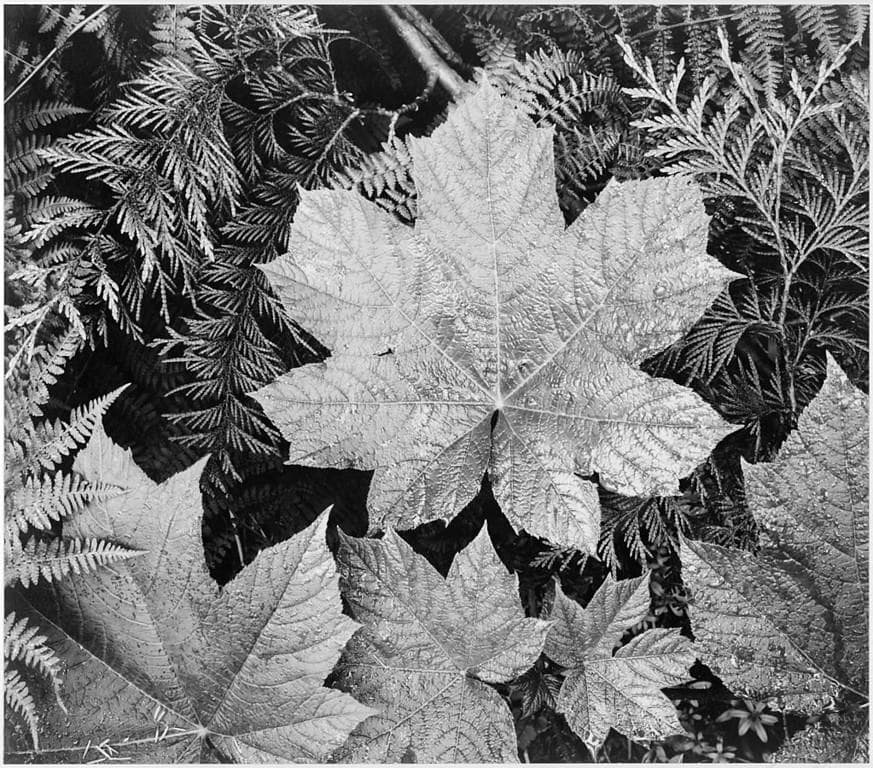
While you can enjoy Adams’s work online, nothing compares to experiencing his prints in person. If you ever get the opportunity, take the time to see his work firsthand. You’ll be captivated by his skillful craftsmanship and gain a deeper appreciation for his dedication to producing the most refined tones in his images.
Ansel Adams On the Web:
2. Henri Cartier-Bresson (1908-2004)
Henri Cartier-Bresson, a co-founder of Magnum Photos alongside Robert Capa and David Seymour, is celebrated as a seminal figure in street photography. Often referred to as the father of the street photography movement, he introduced the concept of “The Decisive Moment.” This principle emphasizes the importance of anticipating social occurrences to effectively capture them, suggesting that merely observing a moment may cause one to miss the chance to photograph it.

Cartier-Bresson’s philosophy encourages photographers to hone their sense of timing and intuition, prompting them to press the shutter button just before an event unfolds. This approach has become a cornerstone of street photography, guiding photographers to stay proactive and attentive to their surroundings to capture the most impactful and authentic moments.
His photography style is marked by a spontaneous and candid approach to capturing the “decisive moment.” Cartier-Bresson focused on observing and capturing real-life events as they unfolded, embodying the essence of street and documentary photography. A master of composition, he often used geometric shapes and lines to frame his subjects, creating a sense of balance and harmony in his images.
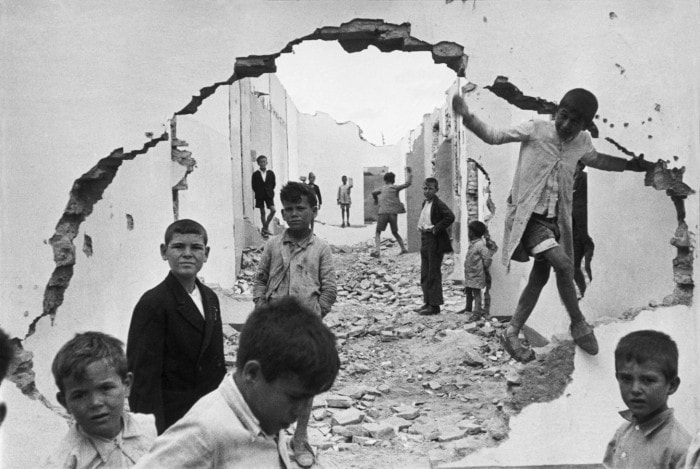
Preferring a 35mm Leica camera, he moved quickly and unobtrusively through the streets, capturing moments often overlooked by others. His work is lauded for its emotional depth, narrative quality, and ability to reveal the beauty and complexity of everyday life. His legacy continues to inspire generations of photographers to observe the world with a keen and discerning eye.
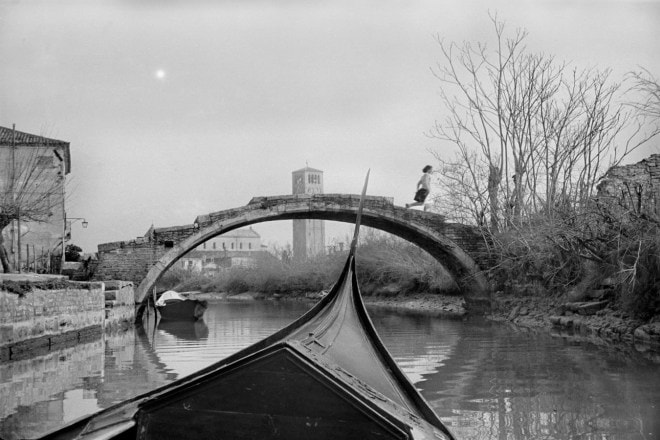
Though primarily known as street photographer and documentary photographer, Cartier-Bresson’s career included several notable accomplishments:
- Founding of Magnum Photos: In 1947, he co-founded Magnum Photos, a cooperative photographic agency that enabled him to pursue documentary and street photography projects worldwide.
- “The Decisive Moment”: In 1952, Cartier-Bresson published his book “Images à la Sauvette,” later translated as “The Decisive Moment.” The book featured a collection of his photographs and outlined his philosophy on capturing the perfect moment in photography.
- World Travels: Cartier-Bresson traveled extensively throughout his career, capturing street scenes and documenting cultures in countries such as India, China, Japan, and the Soviet Union. His ability to capture the essence of a moment and the everyday lives of people made him a pioneer in the fields of street and documentary photography.
Henri Cartier-Bresson On the Web:
3. Philippe Halsman (1906-1979)
Philippe Halsman was a celebrated portrait photographer, born on May 2, 1906, in Riga, Latvia. He began his career in Paris before moving to the United States, where he became renowned for his unique and innovative approach to portraiture.
Halsman’s artistic style was characterized by surrealism, experimentation, and a playful sense of humor. His portraits often incorporated elements of surprise and whimsy, demonstrating his mastery of lighting and composition to create dynamic and engaging images.
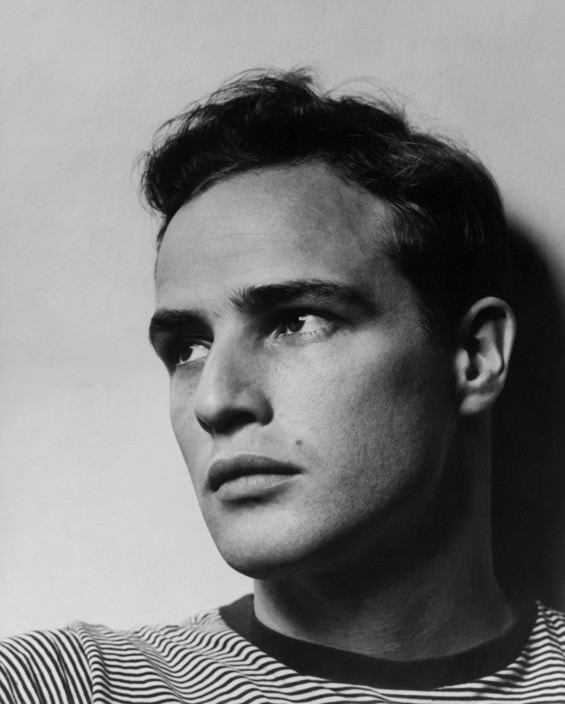
Halsman’s work had a significant impact on the field of portrait photography, pushing its boundaries and elevating it to the status of fine art. He was a pioneer of experimental photography, and his innovative techniques continue to influence photographers today.
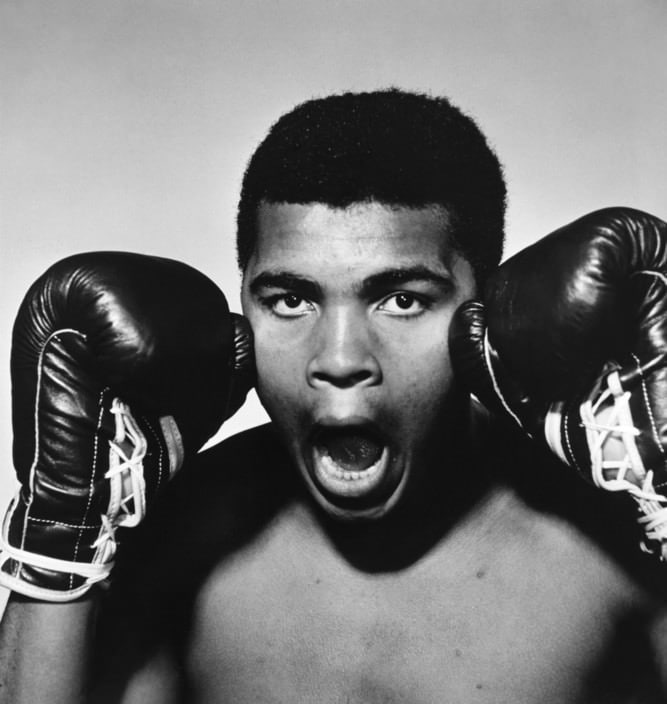
Some notable accomplishments of Halsman’s life related to photography include:
- Collaboration with Salvador Dali: Halsman’s most famous collaboration was with the surrealist artist Salvador Dali. The two worked together on a series of iconic images, including the famous “Dali Atomicus,” which featured Dali suspended in mid-air surrounded by flying cats and water.
- Work with Life Magazine: Halsman worked extensively with Life magazine, where he photographed many of the leading figures of the time. His portraits of celebrities, politicians, and cultural figures were widely published and helped to establish his reputation as a master of portraiture.
- Publication of “Halsman on the Creation of Photographic Ideas”: In 1957, Halsman published his book “Halsman on the Creation of Photographic Ideas,” which outlined his philosophy and approach to photography. The book provided insight into his creative process and his techniques for creating dynamic and engaging portraits. It remains a valuable resource for photographers and continues to be celebrated for its practical advice and artistic insight.
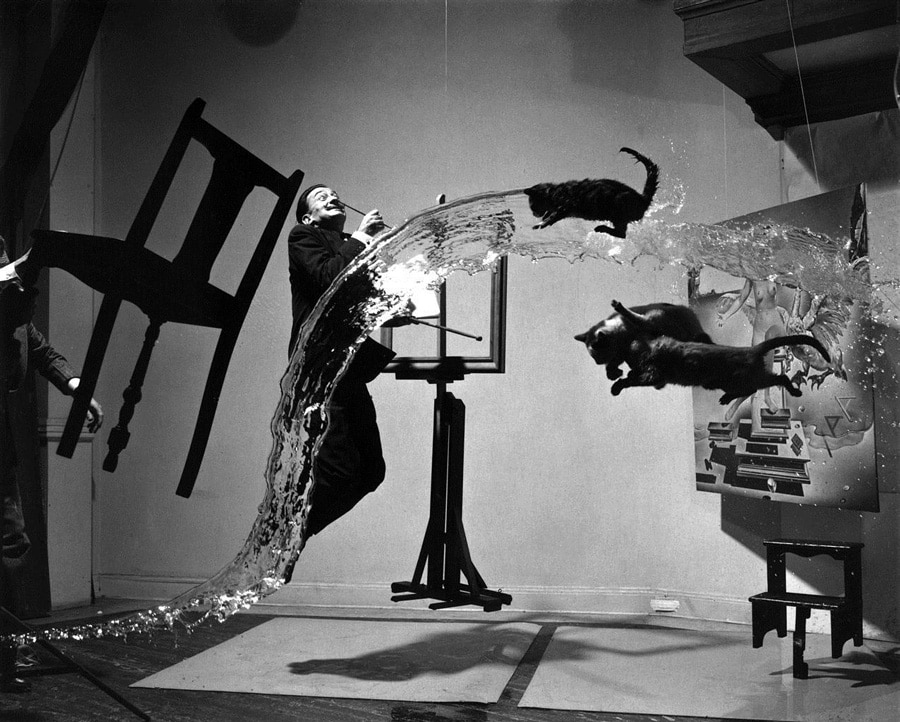
Philippe Halsman On the Web:
4. Brassaï (1899-1984)
Born in Transylvania as Gyula Halász and known by the pseudonym Brassaï, he was a Hungarian-French photographer and journalist who thrived during the artistic period between WWI and WWII in Paris.

Brassaï is best known for his night photography in France during the 1930s, a time when photographic resources were scarce. His work, characterized by subtle shapes perceptible only under dim and dark night light, is considered a profound study of shape. The natural contrast enhanced by wet surfaces and limited light allowed his compositions to focus on the most essential elements needed to convey a concept.
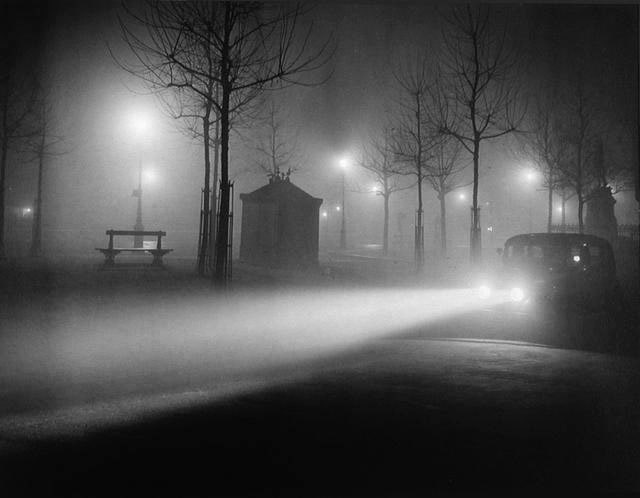
Brassaï captured the essence of Paris and other cities in his photographs. His first collection of work, titled Paris de Nuit, was published in 1933 and achieved widespread success.

American writer Henry Miller, who was also residing in Paris during the same period was an admirer of Brassaï’s work and even wrote the preface for his book “Paris de Nuit.” Miller’s description of the book as “the eye of Paris” reflected the profound impact of Brassaï’s photography on the artistic community of the time.
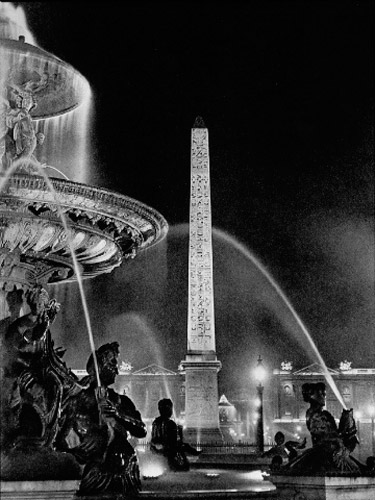
Brassaï On the Web:
5. Man Ray (1890 -1976)
Emmanuel Radnitzky, better known as Man Ray, was an American visual artist who made significant contributions to the Dada and Surrealist movements. Renowned for his innovative techniques as a fashion and portrait photographer, Ray created the iconic photograms named “Rayographs.”

In July 1921, Ray moved to Paris and quickly became friends with Alfred Stieglitz, Marcel Duchamp, and Salvador Dalí. He settled in the Montparnasse quarter, a favorite locale for artists during that era. Ray met and fell in love with Alice Prin, better known as Kiki de Montparnasse, an artists’ model and celebrated figure in Paris’ bohemian circles. She became his companion throughout the 1920s and the subject of some of his most famous photographs.
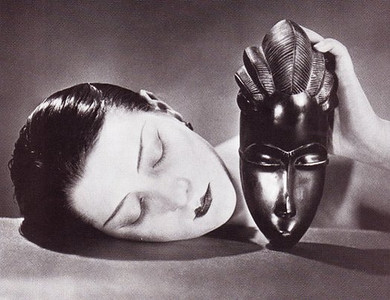
Ray’s iconic portrait of Kiki, “Noire et Blanche” (1926), depicts a stark contrast between black and white, as well as between the inanimate and animate, with elongated faces and closed eyes. Other notable images include “Le Violon d’Ingres” (1924) and “Larmes” (1930), also known as “Glass Tears.” “Le Violon d’Ingres” is an homage to Ingres and his love for playing the violin for guests, showing a nude and limbless Kiki portraying a violin with f-holes as the most notable surrealist element of the portrait.

“Larmes” portrays an unrealistic character of sadness with crystal tears and perfect eyelashes and is linked to his romantic rupture with Lee Miller.

Man Ray was also known for his work in fashion photography. He collaborated with major fashion magazines such as Vogue, Harper’s Bazaar, and Vanity Fair, creating stunning and avant-garde fashion photographs that showcased his unique artistic vision.
Man Ray On the Web:
6. Weegee (1899-1968)
Arthur Fellig, born in Złoczów (now Zolochiv, Ukraine) and later known as Weegee, was a photojournalist renowned for his stark black-and-white street photography of crime scenes and emergencies. He began his career as a darkroom assistant for commercial photographers in the United States before becoming a freelance news photographer.

Weegee’s strategy of frequenting police stations allowed him to stay close to emergency calls and law enforcement activities. By listening to police scanners, he could race to crime scenes, often arriving before the police, to capture people in their unfiltered states. This timely approach made his photographs highly valuable to the press.
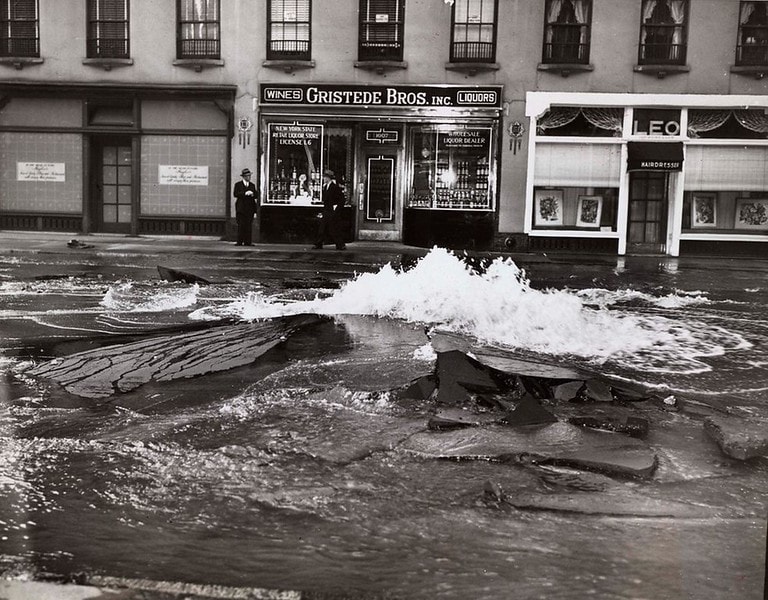
Known for his uncanny ability to reach crime scenes quickly, Weegee was nicknamed after the Ouija board, a phonetic version of “Ouija,” due to speculation that he used it to predict events.
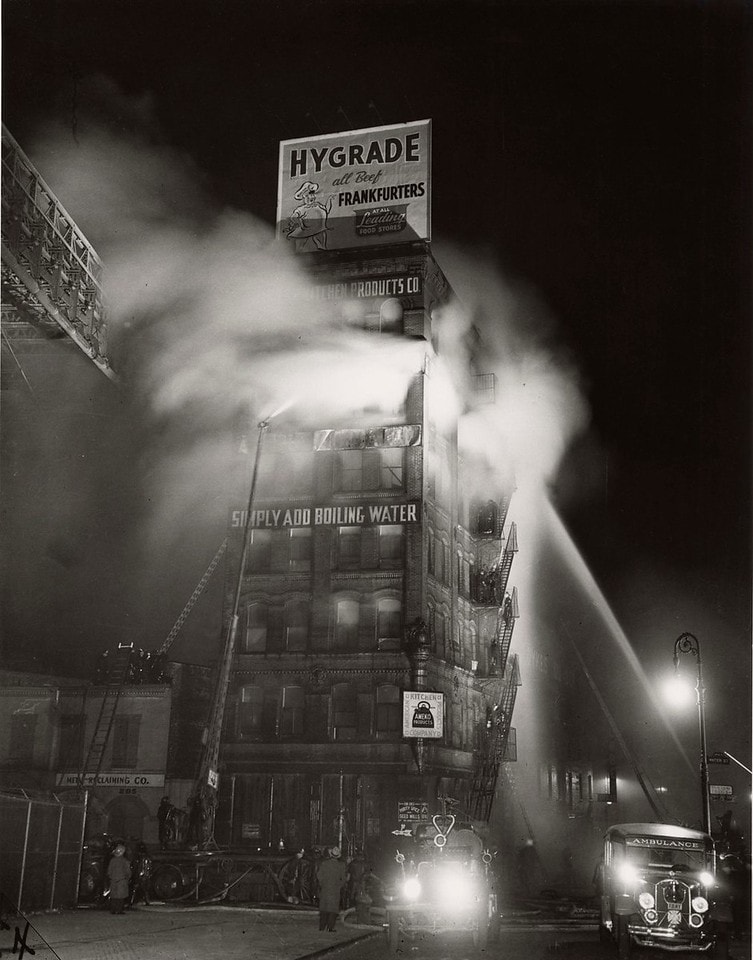
Throughout his career, Weegee used a 4×5 Speed Graphic camera and a mounted flash, but his notoriety came from the compelling elements of his social photographs rather than his agility.
Related: 25 Top Famous Photographs in History
Weegee’s work extended beyond journalism, and he carved out a unique career path. His brutal, humorous, and absurd style became a signature element of his work, solidifying him as the one and only Weegee in the history of photography.
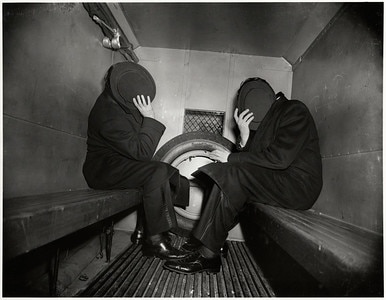
Be sure to look for one of my favorites—a simple yet strong cinematic shot of two men at the buck of a truck that’s under arrest.
Weegee On the Web:
7. Mary Ellen Mark (1940-2015)
Mary Ellen Mark was a versatile and accomplished photographer, renowned for her work in photojournalism, documentary photography, portraiture, and advertising photography. Her images stood out for their simplicity and strength, achieving a delicate balance akin to humor in street photography. Mark had a knack for creating compelling narrative statements within a single frame.

She was also a master of composition, framing her shots with precision and care. Mark’s commitment to perfecting the composition in-camera was evident in her refusal to crop images after capturing them, setting a high standard for her peers.
Mark believed in the importance of emotional investment in photography. Her standout photograph, “Rat and Mike with a gun, Seattle, Washington, USA, 1983,” captures the raw and authentic emotions of her subjects, showcasing two young individuals with a fierce attitude on the streets.
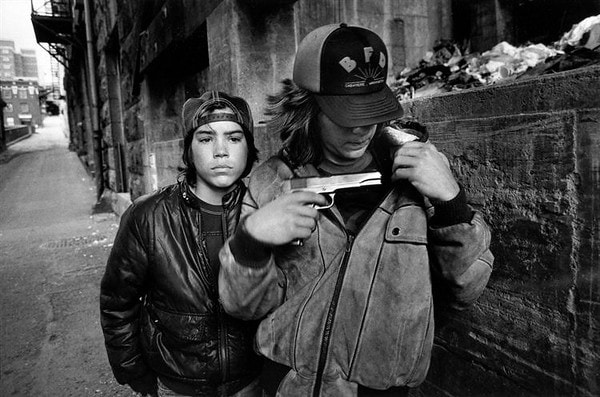
Throughout her career, Mark dedicated herself to documenting the lives of marginalized populations, including street children, homeless families, and individuals with mental illnesses. She aimed to raise awareness and advocate for social change through her powerful and empathetic photographs.
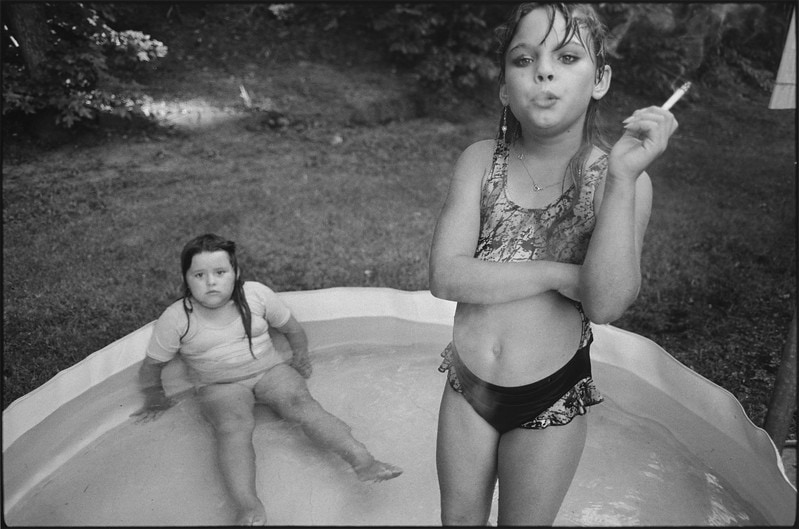
Mark collaborated with leading publications like LIFE, The New Yorker, Rolling Stone, and Vanity Fair, capturing poignant moments and compelling narratives that made her a sought-after photographer.
Related: 15 Word Famous Portrait Photographers
One of Mark’s most significant projects was “Ward 81,” where she spent over a month photographing the women residing in the maximum-security psychiatric ward at Oregon State Hospital. The resulting images, published in a book co-authored with her husband Martin Bell, provided a compassionate and intimate portrayal of the lives of the women in the ward.
Mary Ellen Mark On the Web:
8. Robert Capa (1913-1954)
Born as Endre Friedmann in Budapest, Austria-Hungary, Robert Capa was a Hungarian war photographer who left a tremendous and important body of work—in anthropological terms—of who we are as a culture.
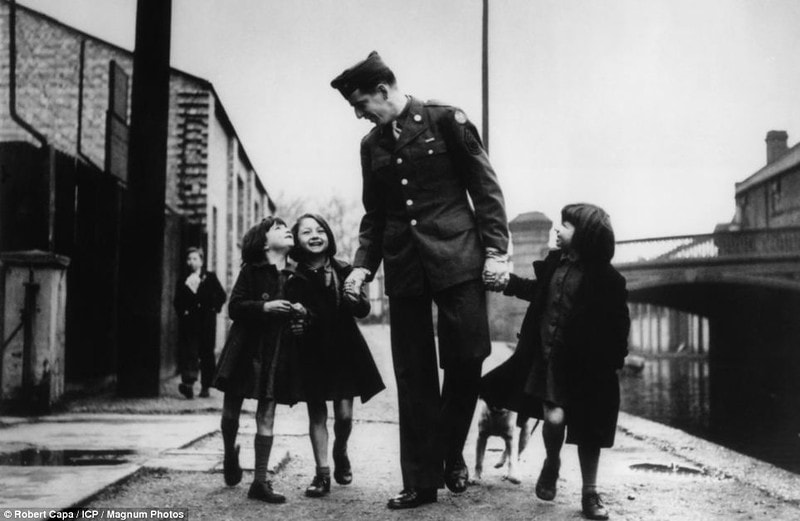
In 1947, Capa co-founded Magnum Photos in Paris with David “Chim” Seymour, Henri Cartier-Bresson, George Rodger, and William Vandivert. The organization was the first cooperative agency for worldwide freelance photographers and is still active today.

Although he originally dreamed of becoming a writer, Capa fell in love with photography in his early years. Prior to working as a photographer in Berlin in 1933, he moved to France during the rise of Nazism when his roots cost him valuable work. He and his beloved Gerda Taró created a persona of this great American photographer we know as Robert Capa.
Related: 12 World Famous Modern Photographers
Capa reached fame in 1936 with his iconic image of the falling soldier at the Spanish Civil War. Although many things have been said about this incredible image, I choose to believe that the image is legitimate.
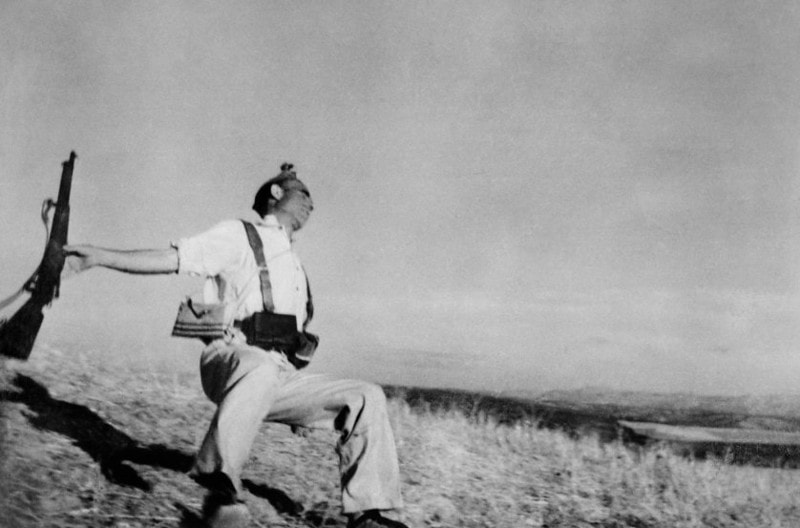
By 1944, he was living in New York City due to the Jewish persecution of WWII. He was embedded with the American troops and photographed the war for LIFE magazine. On June 6th, he was part of the D-Day invasion at Omaha Beach, Normandy, where he was inside the second wave of troops. It’s been said that he shot 106 images with his trusty Contax camera and 50mm lens.

Capa almost lost his life in the bloody event, but after finally reaching safety, he sent the images to LIFE headquarters in England, where an incredibly hated character in the history of photography melted the emulsion and the negatives. Only 10 images survived, with Magnum Contact Sheets posting that the negative of the iconic image of a soldier coming up the beach was missing.
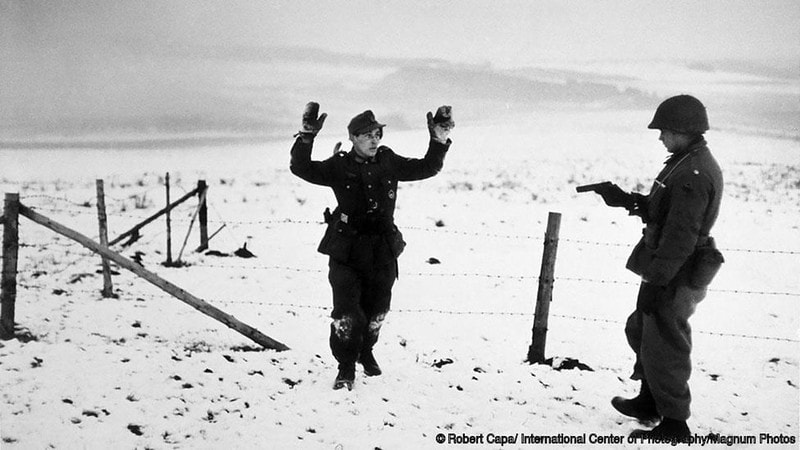
After publicly stating he was done photographing war, Capa traveled to Japan for the Magnum Exhibition in the early 1950s. LIFE magazine talked him into going to Southeast Asia on an assignment covering the French fighting in the first Indochina war. On May 25, 1954, he stepped on a landmine while photographing the war. He died on the way to the local hospital.
Robert Capa On the Web:
9. Gerda Taró (1910-1937)
Born as Gerta Pohorylle, Taró was a war photographer and Endre Friedmann’s (Robert Capa) beloved companion and professional partner. She is regarded as the first female photojournalist to cover the front lines of war and, unfortunately, is also recognized as the first female to die while doing so.
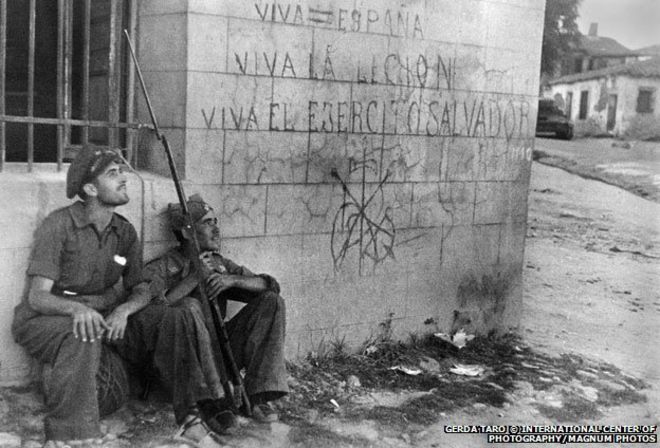
She moved to Paris with Friedmann in 1935 to begin working as a team. Financially speaking, things weren’t as they expected, so they came up with a groundbreaking idea—they created the myth around a famous American photographer named Robert Capa. Thanks to the importance of the journalistic task, Friedmann embraced the idea as the two worked as Capa’s “agent.” While some argue that this was a joint effort between the two, I prefer to believe it was all Taró’s brilliant idea.
When the Spanish Civil War broke out in 1936, Taró traveled to Barcelona, Spain, to cover the events with Capa and David “Chim” Seymour. During this time, she was known by her nickname—La Pequeña Rubia.
With Taró using a Rolleiflex camera, this became the criteria that determined which images were credited to Capa that she actually shot. However, this is not a precise criterion since the couple shared their gear. This is especially important for those questioning the legitimacy of The Death of the Soldier.
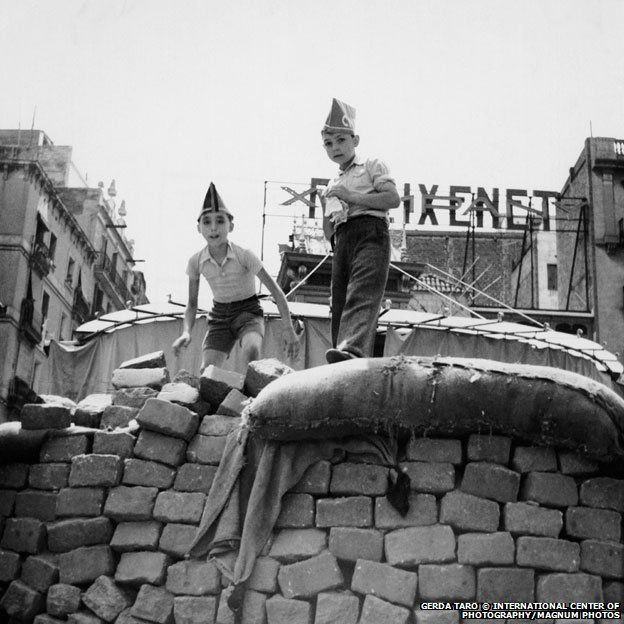
Eventually gaining more professional independence from Friedmann/Capa, she covered many conflicts alone, like the La Batalla de Guadalajara.
Related: Top Famous Female Photographers and Their Photos
During her coverage of the Republican army retreat at the Battle of Brunete on July 25, 1937, she hopped onto the footboard of a car carrying wounded soldiers when a Republican tank crashed into its side. Taró was critically injured and died the following day.
Gerda Taro On the Web:
10. Dorothea Lange (1895-1965)
Dorothea Lange was an American documentary photographer and photojournalist. During the 1930s, one of the deepest and harshest economic crises in human history occurred, leading many people to migrate throughout the United States. This provided Lange with the perfect opportunity to document life in America.

Thanks to an initiative set by President Roosevelt, the Farm Security Administration was established. Roy Stryker, a member of the organization, contacted various photographers to capture the realities of farmers at the time. One of those photographers was Lange, whose work humanized the consequences of the Great Depression and influenced the development of documentary photography.
While Lange produced a vast and invaluable body of work that documents human history, her most iconic image is “Migrant Mother, Nipomo, California” (1938). This image is an icon of the American people’s struggles during the Great Depression. It features Florence Owens Thompson, a mother of seven. After spending a few minutes with Thompson and her family, Lange learned her story.
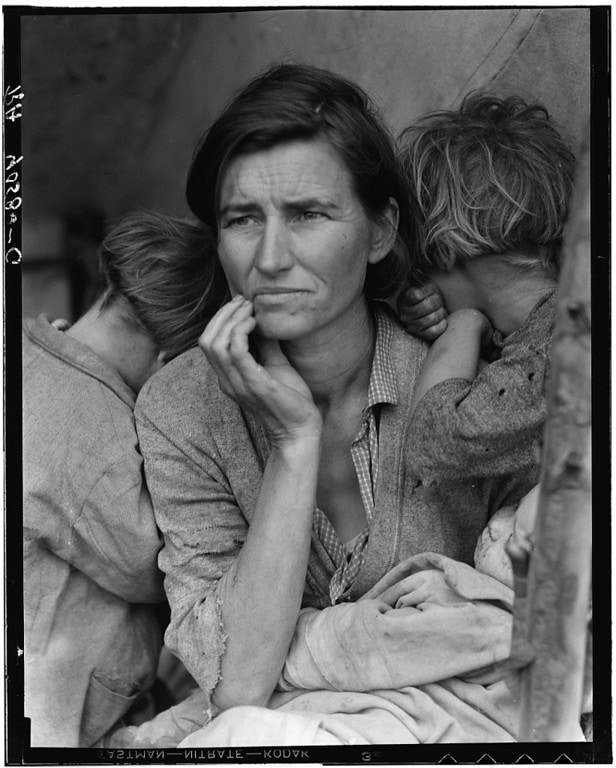
Lange took a series of photographs of Thompson and her children, with the most famous image capturing Thompson in the center of the frame. While our eyes are initially drawn to her expression, it’s only moments later that we notice she’s surrounded by three of her children. The focal point of the image is her hands, which reflects Lange’s fascination with hands and their embodiment of hard, rural work.

Dorothea Lange On the Web:
11. Sally Mann (1951-)
Sally Mann is a renowned American photographer known for her large format black and white photographs that intimately capture her family. Her work, beginning in the 1980s, often focuses on her three children—Emmett, Jessie, and Virginia. Although her photography is celebrated for its artistry, it has also generated controversy for its candid and sometimes provocative nature.

One of Mann’s most well-known works is the book “Immediate Family,” published in 1992. It features 65 images covering a broad range of childhood themes, from joy to sadness. Mann’s photographs depict moments of skinny dipping, reading comics, dressing up, napping, and playing board games, as well as exploring themes of insecurities, loneliness, injury, sexuality, and death.
Despite the controversy, “Immediate Family” is celebrated for its raw and honest portrayal of childhood and family life and is considered a seminal work in fine art photography.

Mann’s commitment to the final product is evident in her work with film, wet plate collodion, and handcrafted prints. She often uses large format cameras and hand-coated photographic plates, which give her images a distinctive, almost antique quality.
Sally Mann On the Web:
12. Robert Frank (1924- )
Robert Frank, born in Zurich, Switzerland, is celebrated as one of the greatest American photographers. His most notable work, “The Americans” (1958), is a transformative book in the history of photography. With an introduction by Jack Kerouac, the book comprises 84 images selected from 28,000 shots taken during Frank’s cross-country road trip in the mid-1950s. The cover, “Trolley-New Orleans” (1955), captures an everyday scene and subtly critiques the social landscape of the time.

Frank’s images uniquely focus on the unseen aspects of everyday life, which were often overshadowed by other topics popularized by the post-war phenomena of the 1950s. His work laid the foundation for contemporary street and documentary photography that spotlight the ordinary. This pioneering approach has garnered him admiration among photographers today.
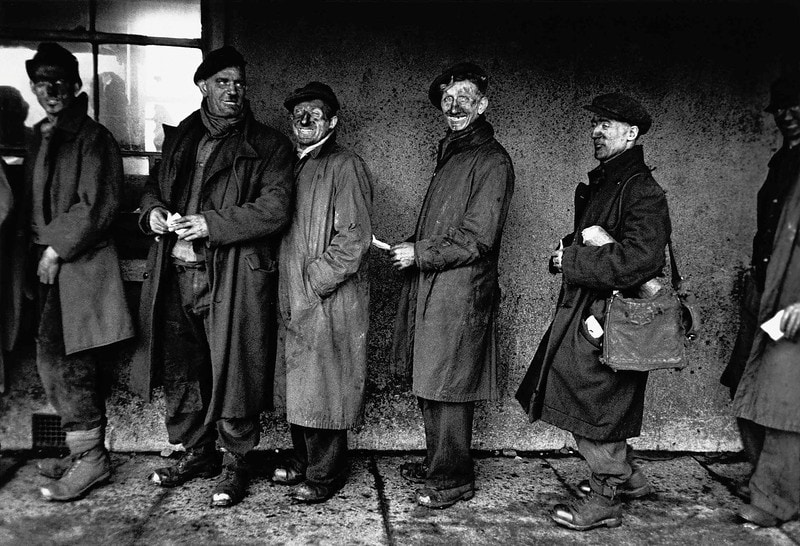
After the release of “The Americans,” Frank transitioned from still photography to filmmaking. He directed films like “Pull My Daisy” (1959) and “Cocksucker Blues” (1972), the latter being a documentary about The Rolling Stones’ 1972 North American tour.
Related: Fascinating World of Fine Art Photography
Despite his success in the film industry, Frank maintained his passion for photography, continuing to capture images throughout his life and returning to still photography in the 1970s.
Robert Frank On the Web:
13. William Eggleston (1939- )
William Eggleston is an American photographer celebrated for his pioneering efforts to elevate color photography as an artistic medium. Historically, photography was primarily known for its monochromatic images.
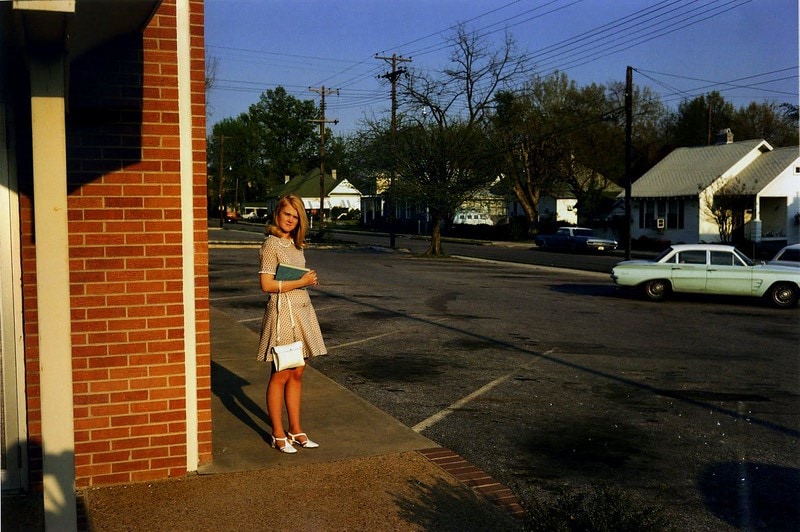
In 1976, Eggleston’s work was showcased at the Museum of Modern Art (MoMA) in New York, marking a pivotal moment in the art of photography. In 1967, he presented his Kodachrome prints to John Szarkowski, who curated a selection of 75 photographs from nearly 400 images, each capturing everyday scenes. Critics like Hilton Kramer referred to his work as “elegant snapshots.” Today, Eggleston’s collection is recognized as a definitive corpus of color photography in the art world.
Among my favorites from his collection is the series presented at MoMA under “William Eggleston’s Guide.“

One of his most iconic images is the human-less tricycle, which serves as a poignant representation of solitude and speaks volumes about humanity. The tricycle, while simple, commands a striking presence that suggests deeper meanings, inviting viewers to reflect. To me, this image encapsulates life, from the joyful simplicity of childhood to the less enjoyable stages of adulthood and beyond.
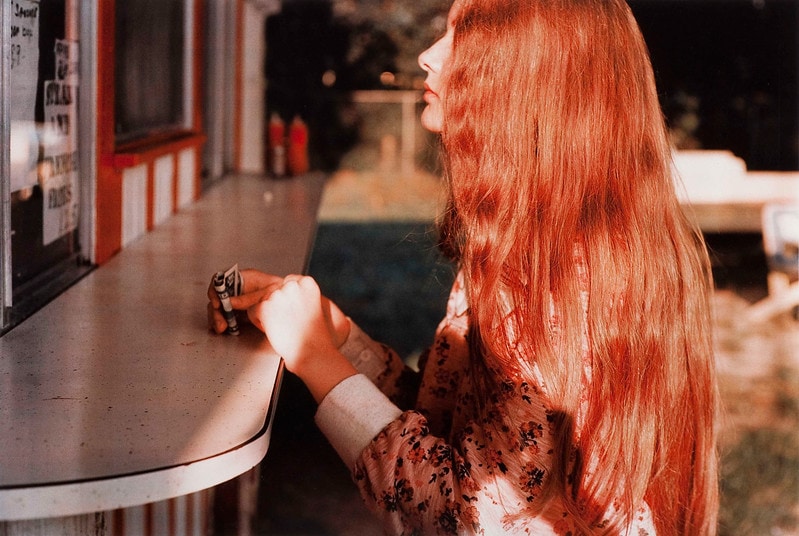
William Eggleston On the Web:
14. Irving Penn (1917-2009)
Irving Penn was an American photographer celebrated for his fashion photography, portraits, and still-life images. His work has been displayed in exhibitions worldwide, and he continues to influence the art of photography.

Penn studied drawing, painting, graphics, and industrial arts under the guidance of Alexey Brodovitch from 1934 to 1938. He worked under Brodovitch’s supervision at Harper’s Bazaar as a student and eventually joined Vogue magazine after Alexander Liberman offered him a position in the Art Department. This marked the beginning of his illustrious career.
Penn was known for his innovative use of simple grey or white backdrops in his studio, which allowed the viewer to focus solely on the subject, whether it was a fashion model, celebrity, or still-life object. He also employed a corner setup, placing his subjects in a V-shaped corner created by two studio flats. This technique forced his subjects into unique, often introspective poses, and created a sense of intimacy and vulnerability in the portraits.
In addition to his studio work, Penn was a skilled fashion photographer. His images for Vogue magazine are some of the most iconic in the publication’s history. He had a keen eye for composition and a talent for capturing the movement and fluidity of fashion garments, creating images that were both dynamic and timeless.

Penn’s photography style is characterized by its simplicity, elegance, and sophistication. It focuses on the subject and is distinguished by its attention to detail, its ability to evoke emotion, and its storytelling capability through a single image.
I encourage you to explore Penn’s work online, in photography magazines, and at museums.
Irving Penn On the Web:
15. Vivian Maier (1926-2009)
Vivian Maier’s story is one of intrigue and complexity.
Maier was a self-taught photographer who took over 150,000 photographs during her lifetime, primarily using a medium-format Rolleiflex camera. She worked as a nanny in Chicago and used her days off to explore the city, capturing candid street scenes and portraits of people from all walks of life.

Her work remained largely unknown until after her death in 2009 when it was discovered by collector John Maloof in a storage locker auction. Her photographs have since been exhibited in galleries worldwide and have received critical acclaim for their unique perspective and intimate portrayal of urban life in the mid-20th century.
The documentary “Finding Vivian Maier,” nominated for a 2014 Academy Award for Best Documentary Feature, provides deeper insight into Maier’s worldview and incredible talent. The film sheds light on her unique perspective and approach to photography.
Maier’s photographs are truly extraordinary. Maloof has published a vast number of her images, making it hard to believe that they were all created by one person. She deserves all the credit for her magnificent body of work. In my opinion, Vivian Maier is undoubtedly one of the masters of photography.

Vivian Maier On the Web:
16. Josef Koudelka (1938 – )
Josef Koudelka, born in 1938 in Boskovice, Czechoslovakia, is a renowned portrait and documentary photographer, best known for his images of the 1968 Soviet invasion of Czechoslovakia and his subsequent work with the renowned Magnum Photos agency. Koudelka’s artistic style is characterized by its raw, evocative, and often gritty portrayal of human experiences, particularly those of marginalized or oppressed communities.
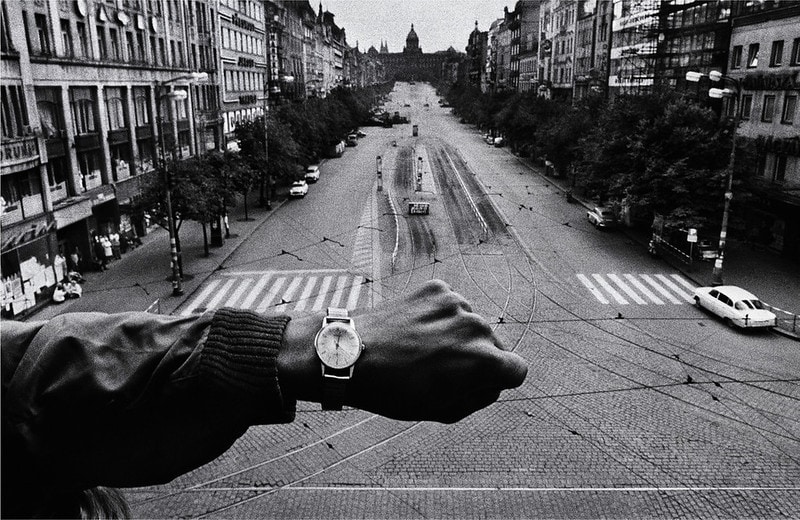
Soviet Invasion Series: Koudelka’s most famous work is his series documenting the 1968 Soviet invasion of Czechoslovakia. These photographs, captured during the Prague Spring, showcase the brutality of the Soviet regime and the resistance of the Czech people. Koudelka’s stark and powerful images earned him international recognition, and they were initially published anonymously to protect him from reprisals.
Magnum Photos: After his Soviet invasion series garnered international acclaim, Koudelka joined the prestigious Magnum Photos agency in 1971. As a member of Magnum, Koudelka continued to travel extensively and document various conflicts, photographing world leaders, social issues, and the human condition.
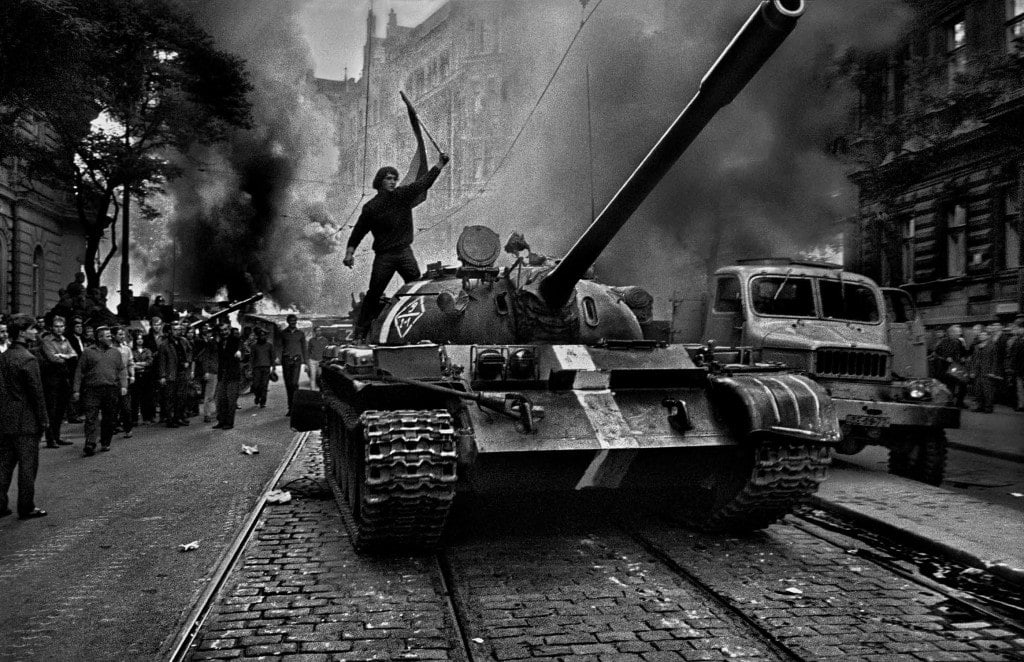
Gypsies Series: Another significant body of work by Koudelka is his “Gypsies” series, which he began in the early 1960s. The series captures the lives and culture of Romani people across Eastern Europe. Koudelka’s empathetic portrayal of the Roma community showcases his commitment to giving a voice to marginalized groups.
Koudelka’s photography is marked by its distinctive aesthetic, featuring high-contrast black-and-white images, dynamic compositions, and a sense of immediacy. His work continues to inspire photographers around the world for its emotional depth, honesty, and unwavering commitment to documenting the human condition.
17. Elliott Erwitt (1928 – )
Elliott Erwitt, born in Paris, France in 1928, is a celebrated portrait and documentary photographer known for his candid and often humorous images that capture the quirks and ironies of everyday life.
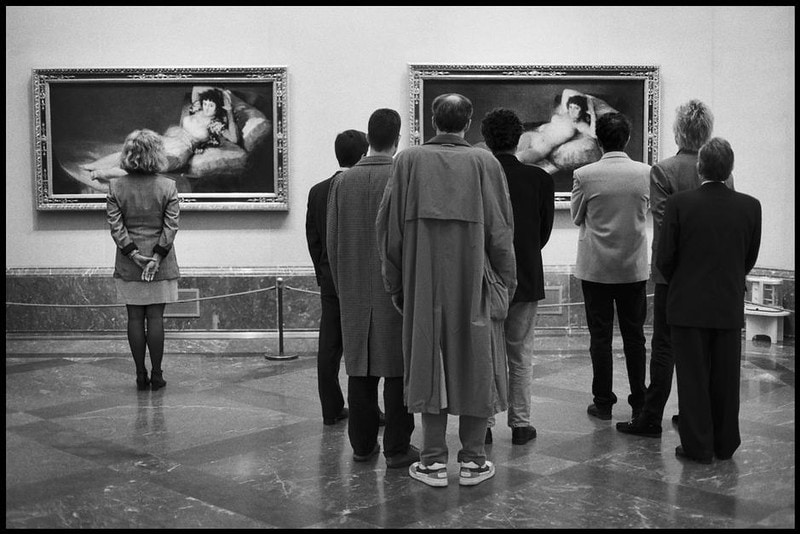
Erwitt’s artistic style is characterized by its playfulness and wit. He has a keen eye for capturing unexpected moments and the subtle humor in mundane situations. His work often features dogs, which he photographs with the same level of dignity and respect that he affords to human subjects.
Magnum Photos: In 1953, Erwitt joined Magnum Photos, a prestigious cooperative of photographers founded by Robert Capa, Henri Cartier-Bresson, and others. As a member of Magnum, Erwitt traveled extensively and produced a significant body of work that includes portraiture, street photography, and social commentary.
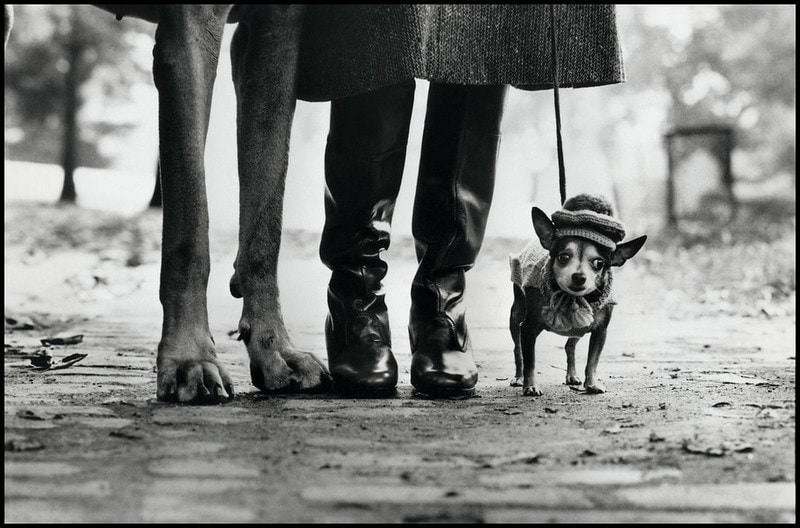
Dogs: Erwitt has a special affinity for dogs, which are a frequent subject in his work. His photographs of dogs range from humorous to poignant and are often anthropomorphic, capturing the animals in human-like situations or expressions. Erwitt’s books dedicated to his canine subjects include “Son of Bitch,” “Dog Dogs,” and “Woof.”
U.S. Army Service: During the 1950s, Erwitt served in the United States Army as a photographer’s assistant. Despite the serious nature of his work, he managed to infuse his military photographs with his signature humor and wit, showcasing his ability to find humor in even the most challenging situations.

Elliott Erwitt’s work continues to resonate with audiences around the world for its humor, humanity, and unique perspective on life’s ordinary moments.
Humor is perhaps the hardest thing to achieve in any discipline, but Elliott Erwitt makes it seem easy as a photographer known for his candid, humorous photographs of ironic and absurd situations in everyday life.
He also served in the United States Army during the 1950s and documented military situations with his own unique and peculiar style.
He joined Magnum Photos in 1953 and worked as a freelance photographer for numerous magazines. He also frequently works with a special subject—his dogs—and has published four books that all center on his elegantly unique Erwittian humor.
18. W. Eugene Smith (1918 – 1978)
W. Eugene Smith, born in Wichita, Kansas in 1918, was a renowned American photojournalist and portrait photographer, best known for his powerful and evocative images that documented social issues and human suffering.

Smith’s artistic style is characterized by its deep compassion, empathy, and narrative depth. His work often focused on the lives of ordinary people and the impact of social and environmental issues on their lives. Smith’s images are noted for their emotional resonance, storytelling capabilities, and meticulous attention to composition and detail.
World War II: Smith served as a war correspondent during World War II, working for Ziff-Davis Publishing and later for Life magazine. His photographs from the Pacific theater captured the brutality of war and the resilience of the human spirit. He was seriously wounded while photographing the battle on Okinawa in 1945.

Pittsburgh Project: In 1955, Smith undertook a massive project to document the city of Pittsburgh, initially intended to take three weeks but eventually lasting over three years. The project resulted in thousands of images that captured the city’s industrial landscape, its people, and the social and environmental challenges they faced.

Jazz Loft Project: In the late 1950s and early 1960s, Smith turned his attention to the New York jazz scene, documenting the lives of musicians and artists in a loft at 821 Sixth Avenue. His extensive audio and photographic documentation of this period, known as the “Jazz Loft Project,” provides a unique insight into the creative and cultural life of the time.
W. Eugene Smith’s photography is celebrated for its humanity, compassion, and ability to shed light on important social issues. His work continues to inspire and move viewers with its powerful storytelling and emotional depth.
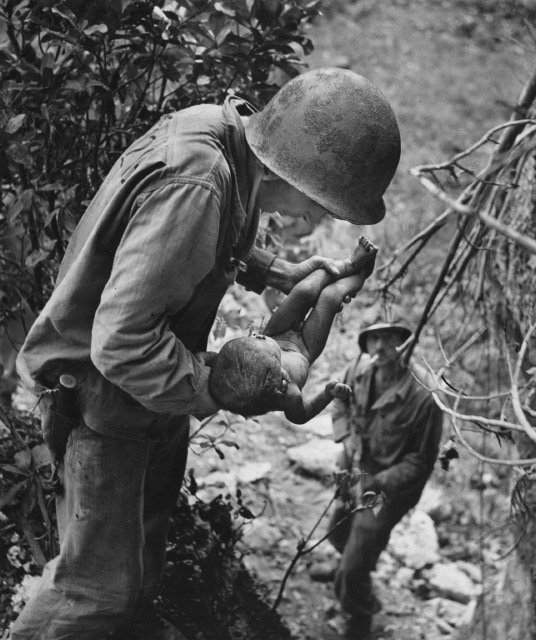
19. Garry Winogrand (1928 – 1984)
Garry Winogrand, born in 1928 in New York City, was an American photographer celebrated for his street photography that captured the vibrant and chaotic essence of urban life in post-war America. His work is renowned for its spontaneity, wit, and keen observational skills.

Winogrand’s artistic style is characterized by dynamic compositions, a sense of immediacy, and an unvarnished portrayal of everyday life. His photographs often featured skewed angles, tight framing, and a sense of movement, capturing the energy and unpredictability of the streets. He is often associated with the “snapshot aesthetic,” emphasizing candid, unposed moments.
A pioneer of street photography, Winogrand is regarded alongside photographers like Henri Cartier-Bresson and Joel Meyerowitz. He was known for wandering the streets of New York City with his camera, capturing the energy, diversity, and complexity of urban life.
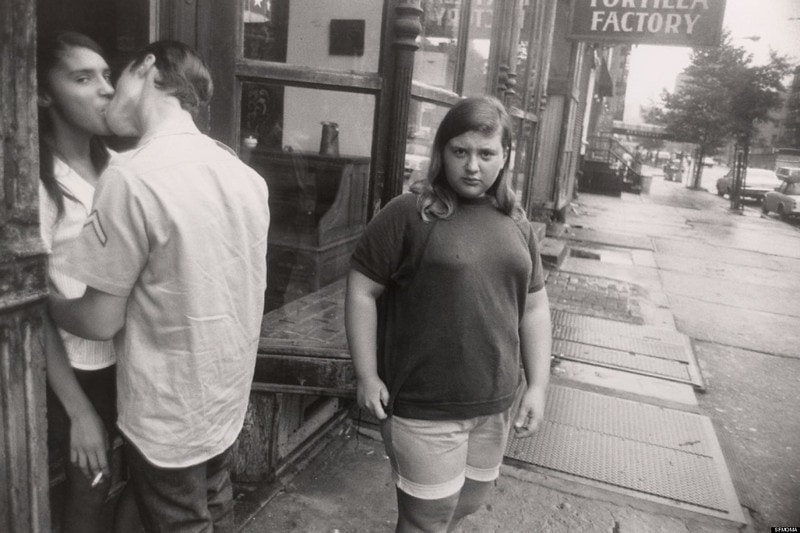
Winogrand received two Guggenheim Fellowships in 1964 and 1969, which allowed him to travel and photograph extensively across the United States. These trips resulted in some of his most iconic series, including “Public Relations” and “Women are Beautiful,” capturing the changing social landscape of the 1960s and 1970s.
Winogrand passed away suddenly in 1984, leaving behind a massive archive of over 300,000 unedited images.
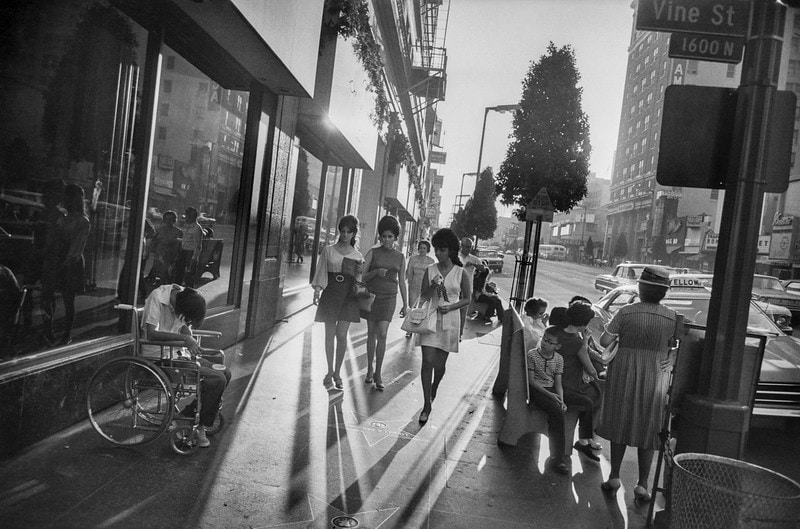
Garry Winogrand’s photography is celebrated for its vitality, humor, and keen observations of human behavior. His work remains an integral part of the photographic canon, illustrating the complexities of modern life with wit and insight.
20. André Kertész (1894 – 1985)
André Kertész (1894-1985) was a Hungarian-born photographer known for his pioneering contributions to photojournalism and modernism. His style is characterized by poetic compositions, unique angles, and an ability to capture emotional depth.

Kertész’s artistic style is marked by innovative compositions, unique angles, and a keen eye for capturing the emotional essence of his subjects. He was a master of using light and shadow, and his work often had a dream-like, ethereal quality.
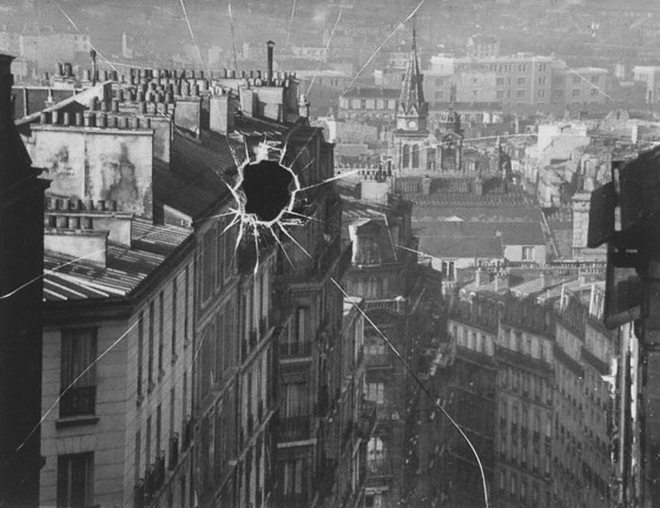
Kertész shared a close friendship with fellow Hungarian photographer Brassaï. The two met in Paris in the early 1930s, and their relationship proved mutually beneficial, with Brassaï often crediting Kertész with influencing his approach to photography.

André Kertész’s photography is celebrated for its emotional resonance, visual poetry, and innovative vision. His work has had a profound influence on subsequent generations of photographers, and his legacy continues to be celebrated for its timeless beauty and emotional depth.
21. Diane Arbus (1923 – 1971)
Diane Arbus, an American photographer, uniquely focused on portraying those on the societal fringes, including dwarfs, giants, nudists, and circus performers. Her work provides an unflinching look at a segment often overlooked by mainstream society, capturing humanity rarely seen by the public eye.
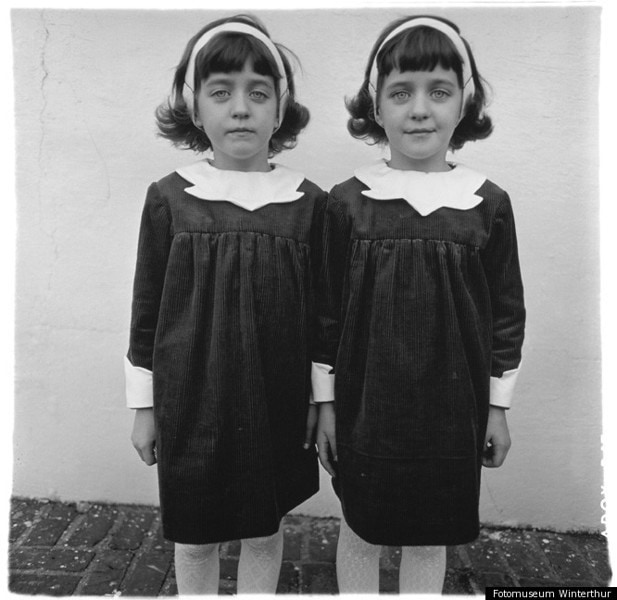
Often compared to poet Sylvia Plath, Arbus tragically ended her life at 48, leaving behind a profound and lasting influence on photography. Credit for bringing Arbus to the world’s attention goes to influential curator John Szarkowski of the Museum of Modern Art, who showcased her work alongside contemporaries Garry Winogrand, Edward Weston, and Lee Friedlander in the context of “A New Generation of Documentary Photographers.”
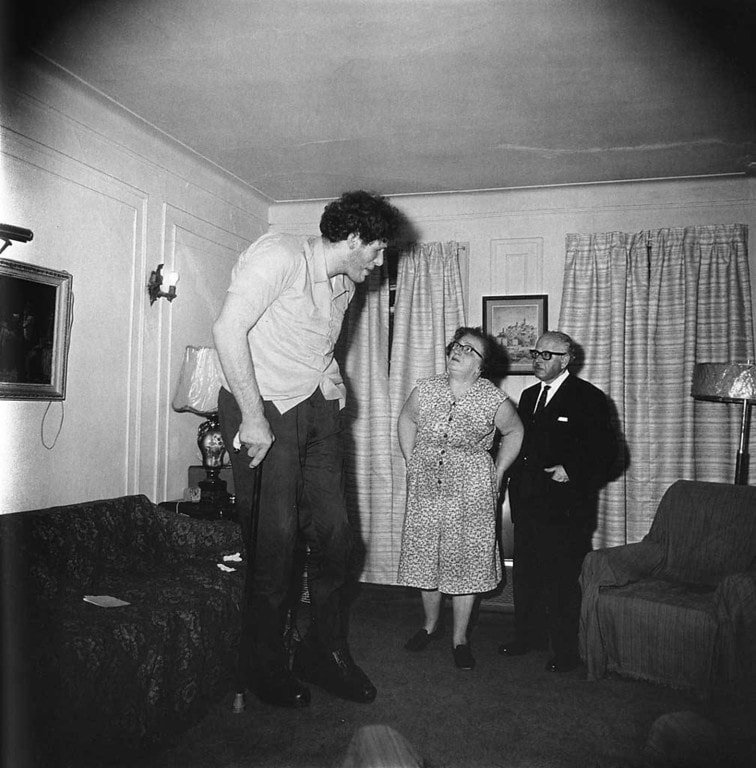
Arbus’s ability to connect closely with her subjects and capture them outside their usual context gives her portraits a surreal and gripping quality. Celebrated for her evocative portrayal of individuality against societal norms, Arbus’s photographs invite introspection and empathy, highlighting the complexity and diversity of the human condition.
22. Steve Mccurry (1950 – )
Steve McCurry, the acclaimed photojournalist born on February 23, 1950, in Philadelphia, is renowned for emotionally rich portraits. His iconic photograph, “Afghan Girl,” featuring Sharbat Gula, became a global sensation, gracing the cover of National Geographic in June 1985. This image, capturing Gula’s expressive eyes and harmonious colors, stands as one of the most impactful portraits ever created.
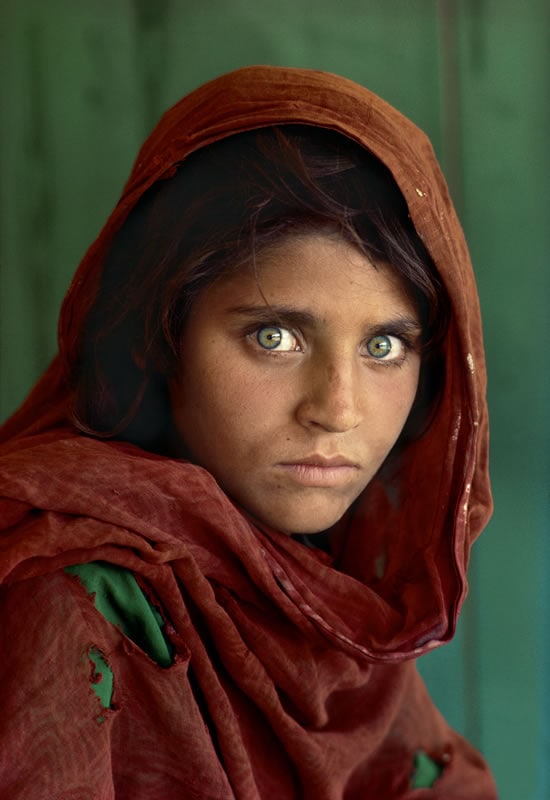
McCurry’s dedication to photography is evident in his consistent excellence, making him a valuable inspiration for photographers. His pivotal moment occurred in 1978 during a six-month trip to India, laying the foundation for his future work.
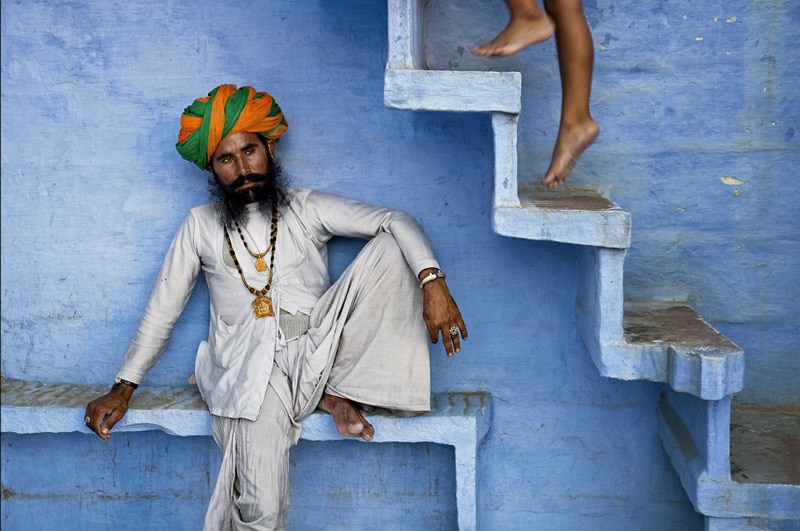
Collaborating extensively with National Geographic, McCurry showcases his ability to capture the beauty and complexity of the world. His work transcends language, resonating deeply with viewers and solidifying his place in photography history.
World Famous Photographers | Conclusion
In the vast landscape of art history, the contributions of these 21 famous photographers stand as timeless pillars, shaping the narrative of visual storytelling. From capturing iconic moments to pioneering new perspectives, each photographer has left an indelible mark on the canvas of the world of photography. Their collective legacy defines what it means to be the best photographers ever, and their work continues to inspire and influence generations.

